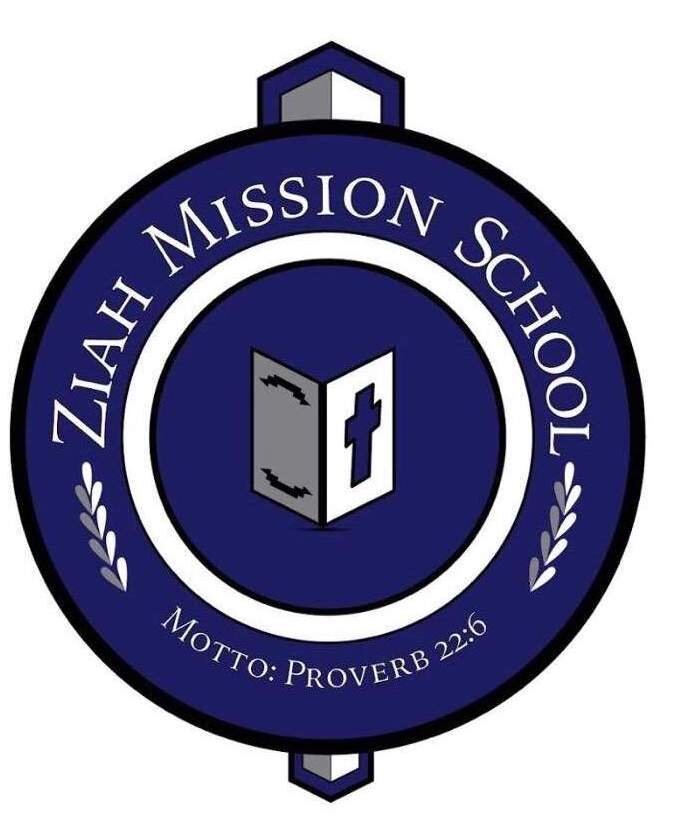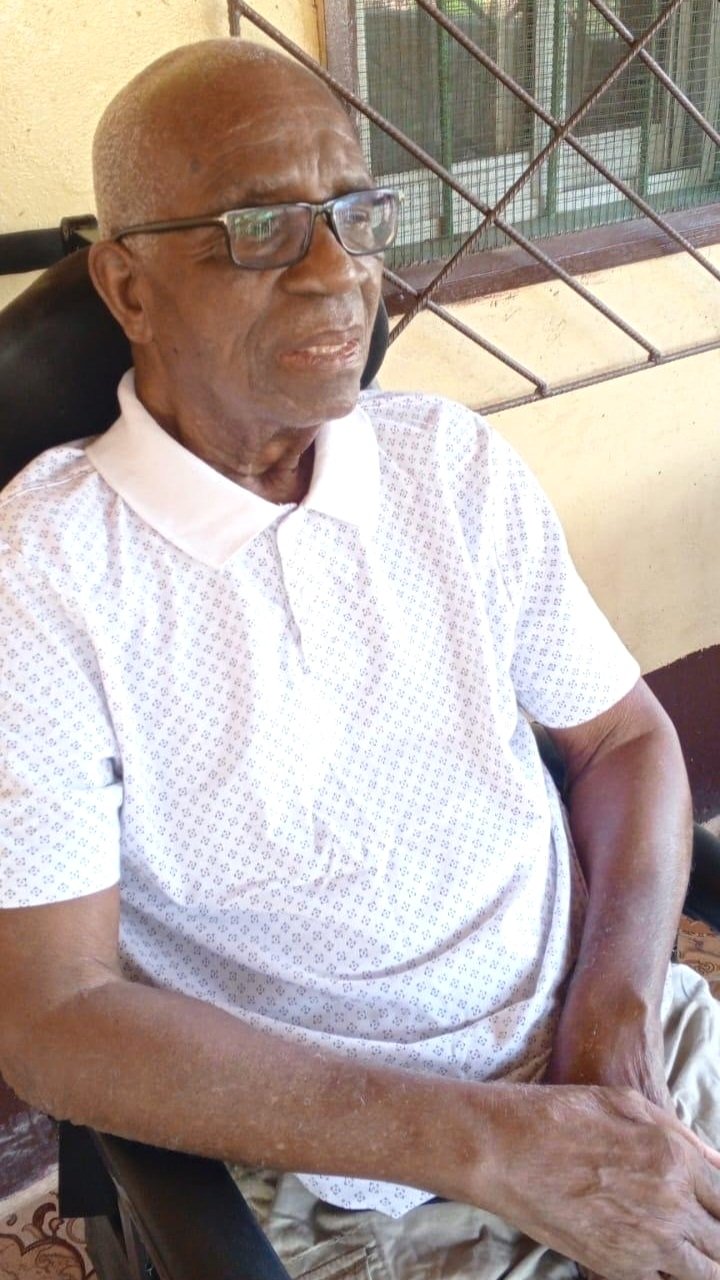The Ziah Mission School is located in Nimba County, more than 300 miles from Liberia's capital of Monrovia, and is only accessible by rough roads.
The Ziah Mission School was founded by Christian Africans in 1960. The school has been the first educational resource for many Liberians who have gone on to positions of leadership in Liberia and many other countries.
Nearly destroyed during the Civil War, the school is still a vital resource in the community and relies entirely on donations. The history of this amazing school is described below.
History of Ziah Mission
As early as 1933, the Baptist Mid-Missions in Cleveland, Ohio, commissioned white missionaries to Liberia to establish churches to convert Africans to Christianity. White missionaries who could neither speak African languages nor understand African cultures were sent to Tappita, Nimba County. Even as the missionaries taught Christian principles, some displayed racist actions. While Africans built homes where the missionaries lived, Africans were not allowed to live close to the missionaries. They could not have the same amenities in their homes, such as electricity or running water. In fact, some missionaries never allowed Africans into their homes, let alone to eat and drink from the dishes they used. There were no schools for Liberian children in Tappita. As the missionaries established schools only for their children, newly converted Liberian Christians were discouraged from pursuing educational advancement.
At an annual conference in 1954, an American preacher shared a story about Korean Christians who established schools for their children when white American missionaries, during the Korean War, refused to build schools for Korean children, similar to the fate of Liberians. Immediately after the conference, an emergency meeting was held, and the late Rev. Moses Dorleah was elected education board chairman. Rev. John K. Demey was co-chairman. The board resolved to erect a school in Ziah, a very remote town seventeen miles from Tappita.
Construction began for Ziah Mission School even though the education board lacked a financial source to sustain the school. Determined to support the board's vision, sister churches contributed annually to support this endeavor. Construction was completed in 1960. Rev. Mahn C. Krua and his wife, Esther Krua, were appointed to operate the school. Rev. Krua, the head pastor at the nearby Ziah Mission Church, served in multiple positions at Ziah Mission School—Bible teacher, treasurer, and fundraiser. He frequently traveled to nearby counties to recruit qualified teachers. Other men appointed to Rev. Krua’s team were Deacon Peter Makor and Deacon Tarwo Yezian.
Reverend Mahn C. Krua and his wife, Esther.
Deacon and Mrs. Peter Makor were in charge of the girls’ dormitory, while Rev. and Mrs. Krua were in charge of the boys’ dormitory on the 250 acres of land owned by the Ziah Mission School. To sustain the school’s activities and ensure that poor families could still afford to send their children to the school, Rev. Krua planted rubber and cocoa, Liberia’s major cash crops, to raise funds for the school.
During the Liberian Civil War, when the area had to be vacated, Ziah Mission School was severely damaged. Furniture, fixtures, doors, roofing materials, and other building components were stolen. Teachers fled. Farms that were used to grow crops to offset expenses were left overgrown. Although the school has since reopened, it is now a shell of itself. It faces significant deficiencies, including overcrowding, underqualified teachers, and many other problems that also plague the vast majority of Liberian schools.
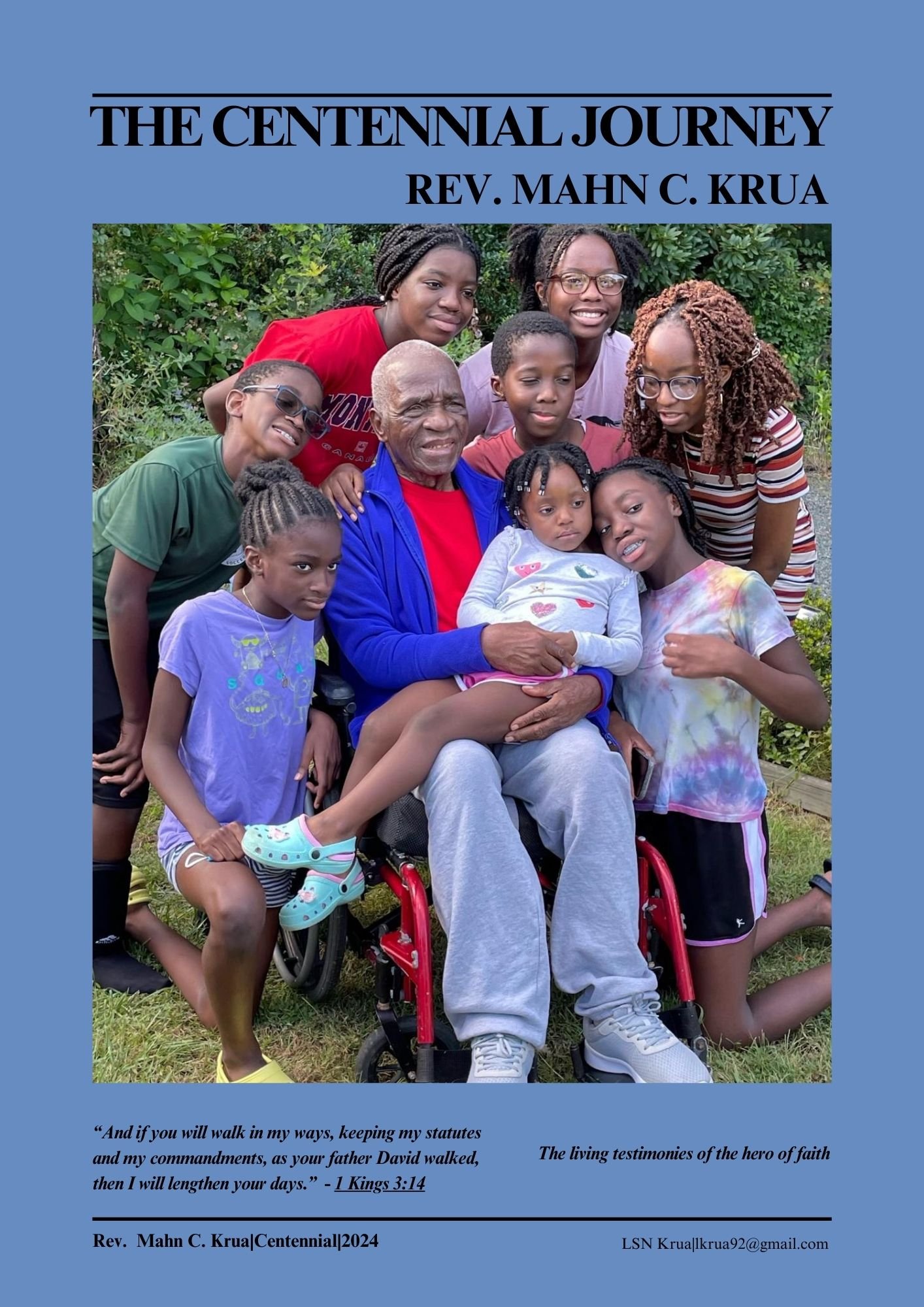
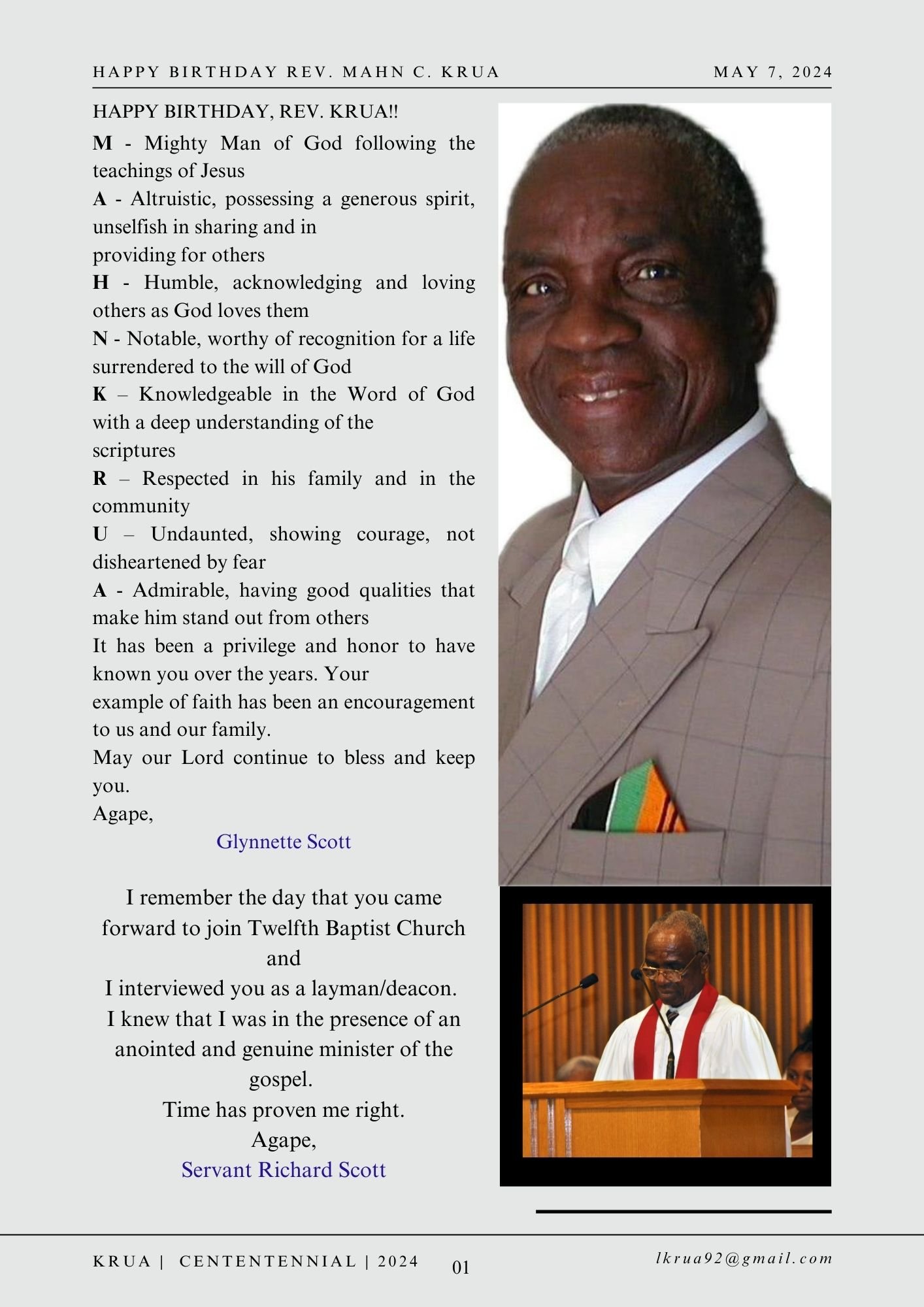
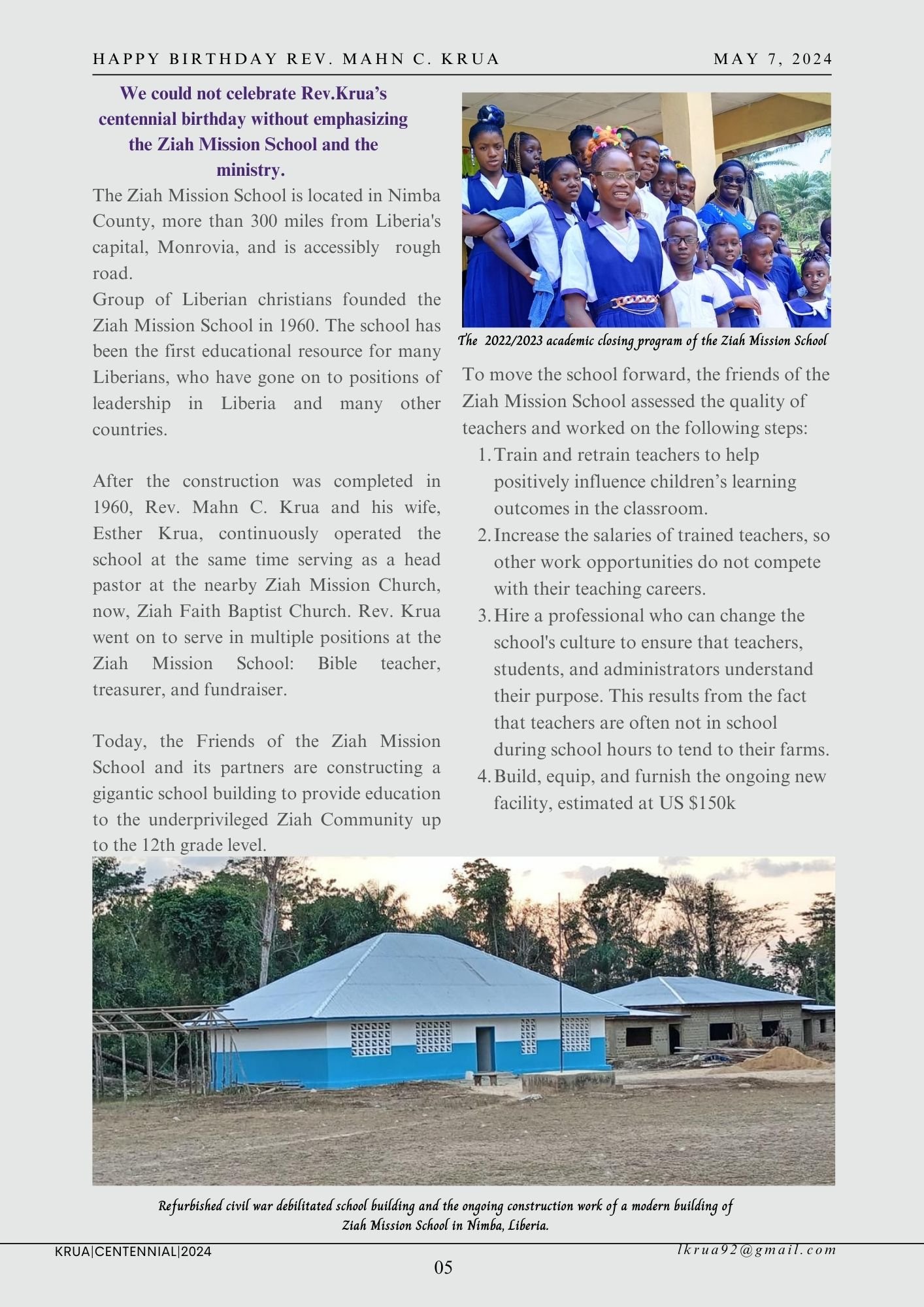
Ziah Mission School has faced seemingly insurmountable obstacles, but over decades of existence, this school has produced ministers, engineers, doctors, nurses, lawyers, business executives, and entrepreneurs. Notably, a graduate of the school was named Liberia’s ambassador to the United Nations Food and Agriculture Organization in Rome, Italy.
Current State of Ziah Mission School
Although the civil war has ended, Ziah Mission School continues to suffer due to a lack of finances. Many teachers are forced to abandon the classroom to tend to their farms or other ventures that could bring more income because skilled workers in Liberia are paid significantly below the minimum wage.
At Ziah Mission School, teachers are high school graduates with some teacher training certification. The principal holds an Associate of Arts Degree. There is an urgent need to assess teachers' skills and then provide a training program.
One hundred eighty-seven pupils are enrolled at Ziah Mission School. The small facility consists of five classrooms. There are 9 grade levels, including Nursery, Kindergarten 1, Kindergarten 2, and grades 1 through 6. The closeness of the rooms means that noise often creates distractions for students. The nursery and kindergarten areas are not conducive for early childhood learning.
Last year, the 63-year-old building needed significant repairs due to safety issues. Construction on the new school building was paused to concentrate on making the existing school building safe for the children. That work has been completed, and the focus is now on completing the new school building.
